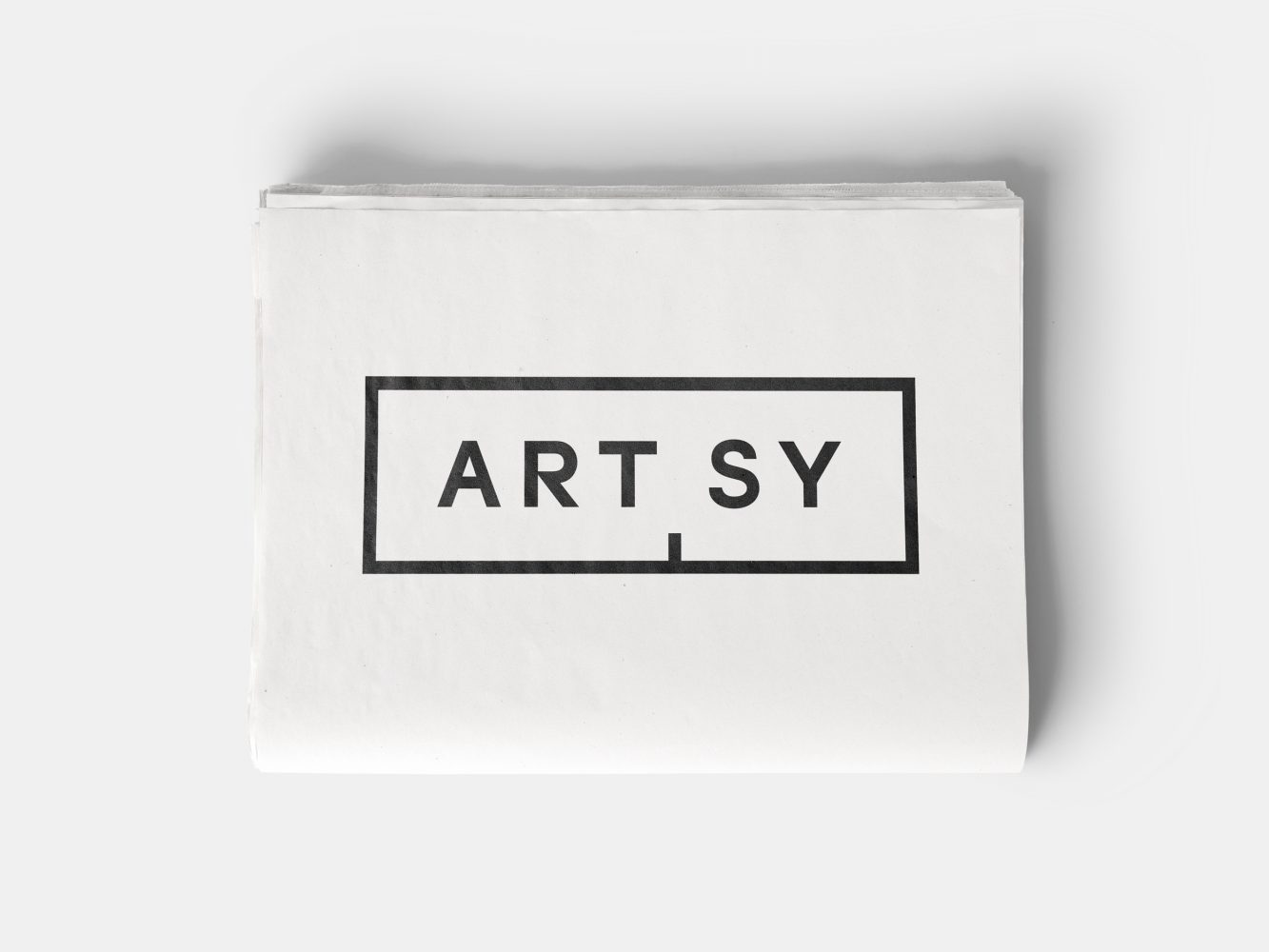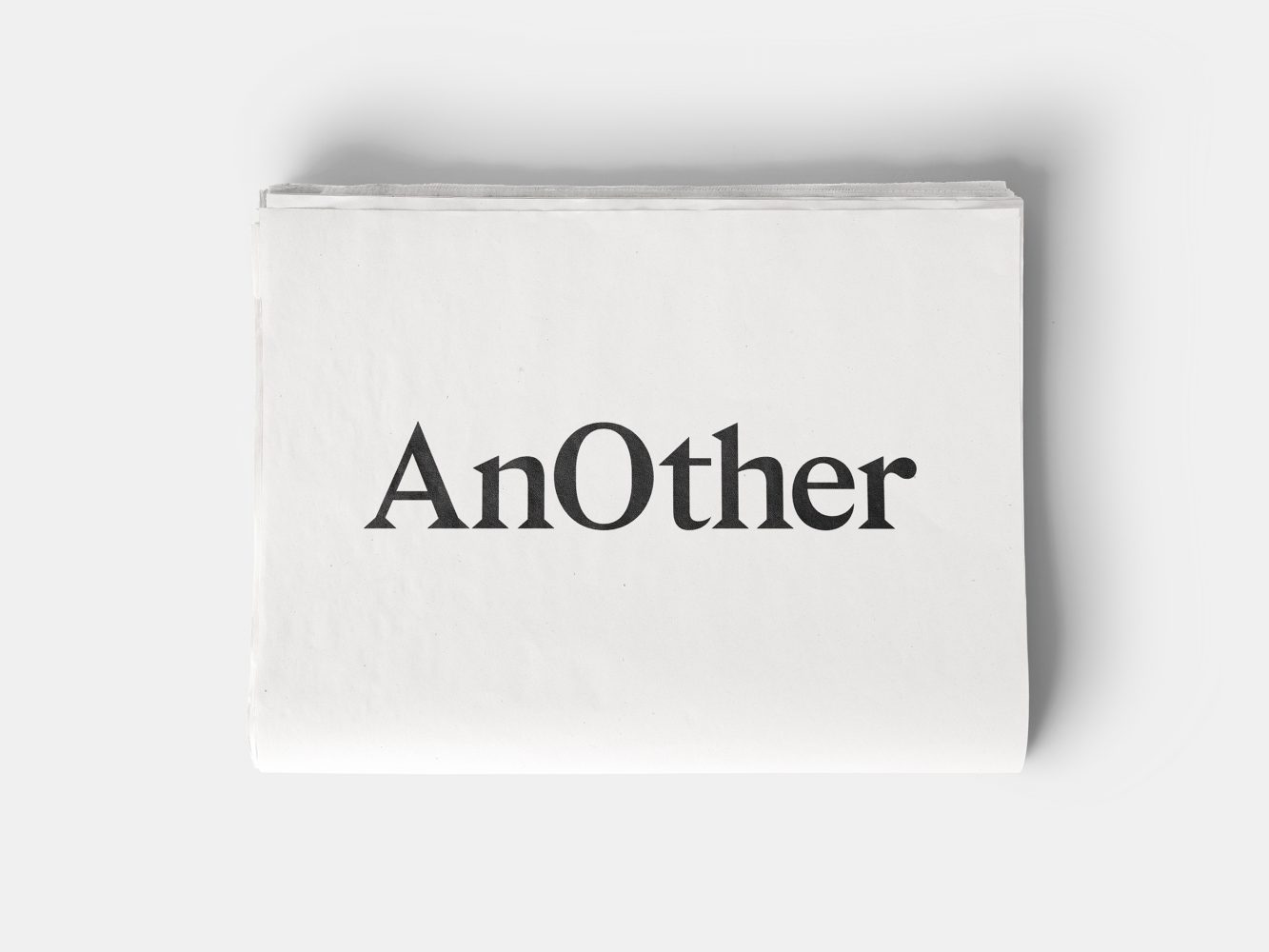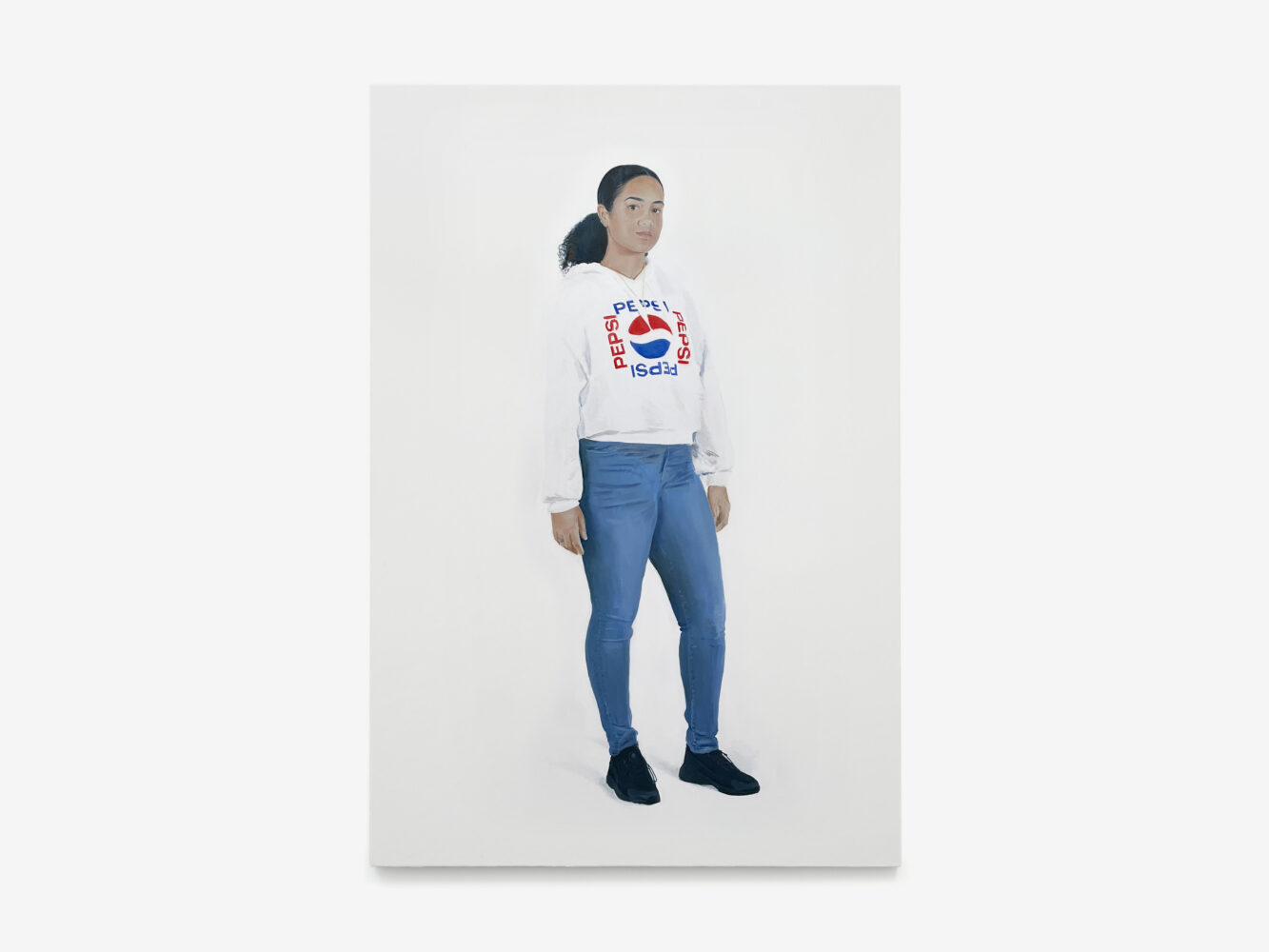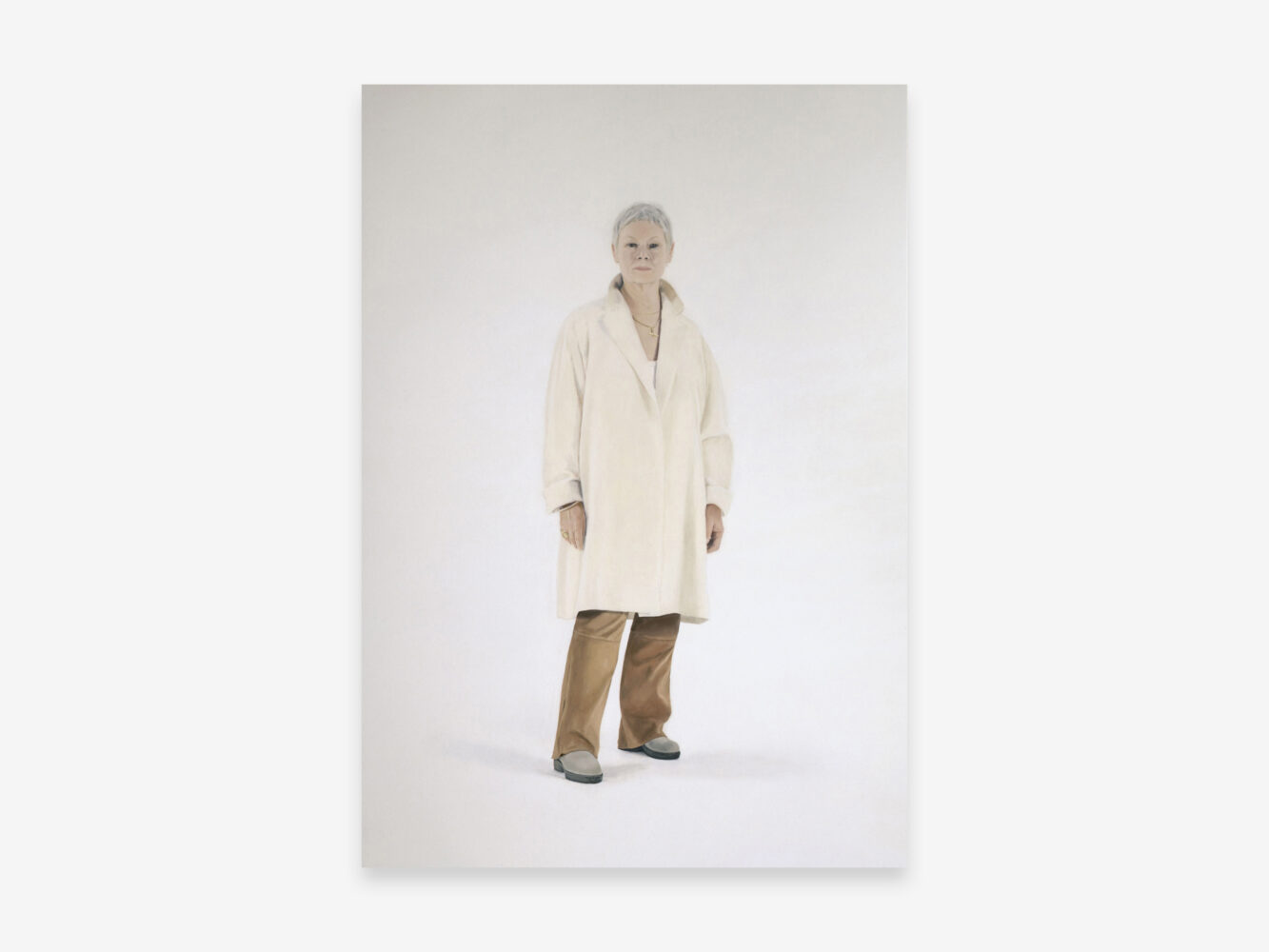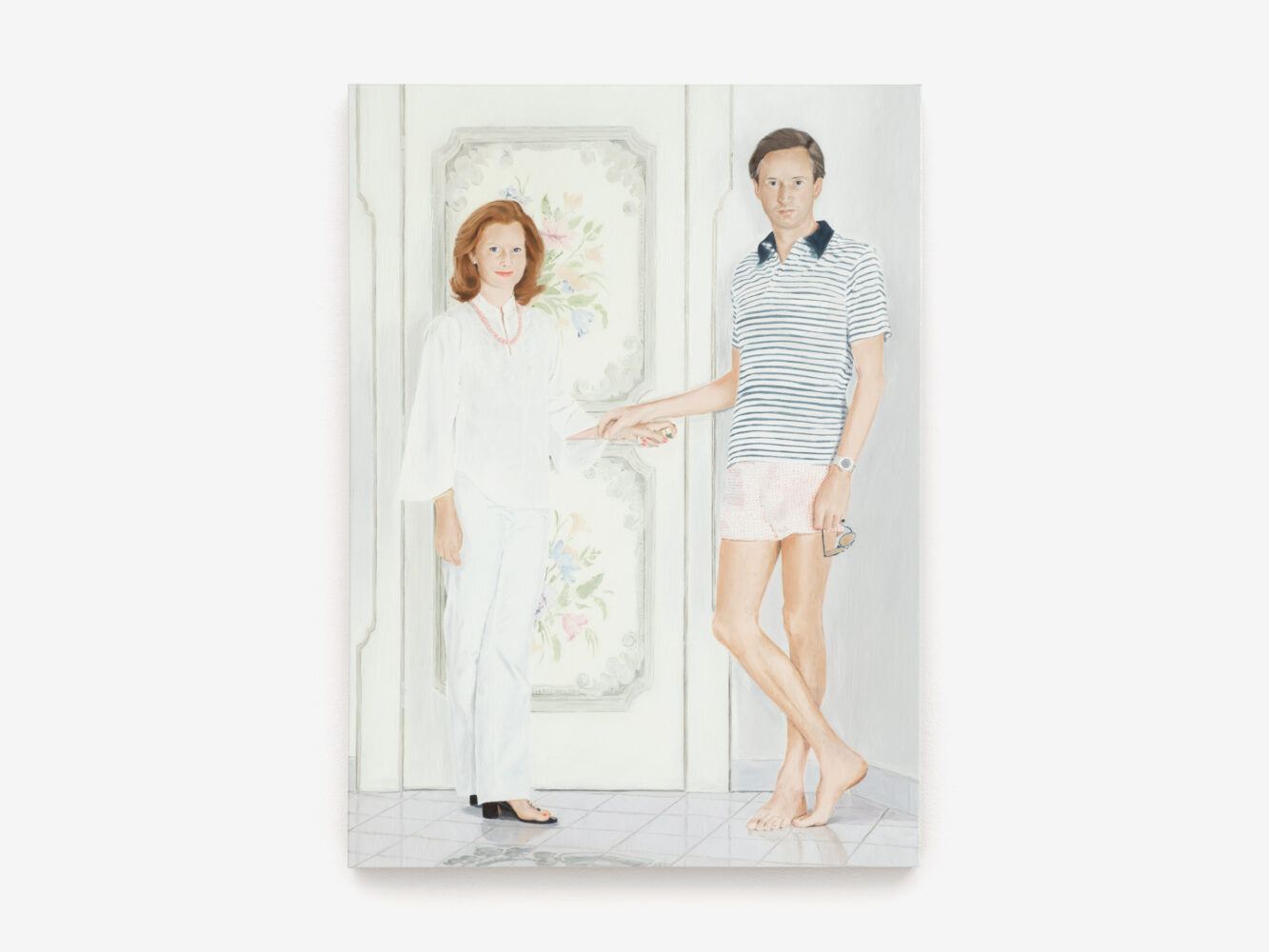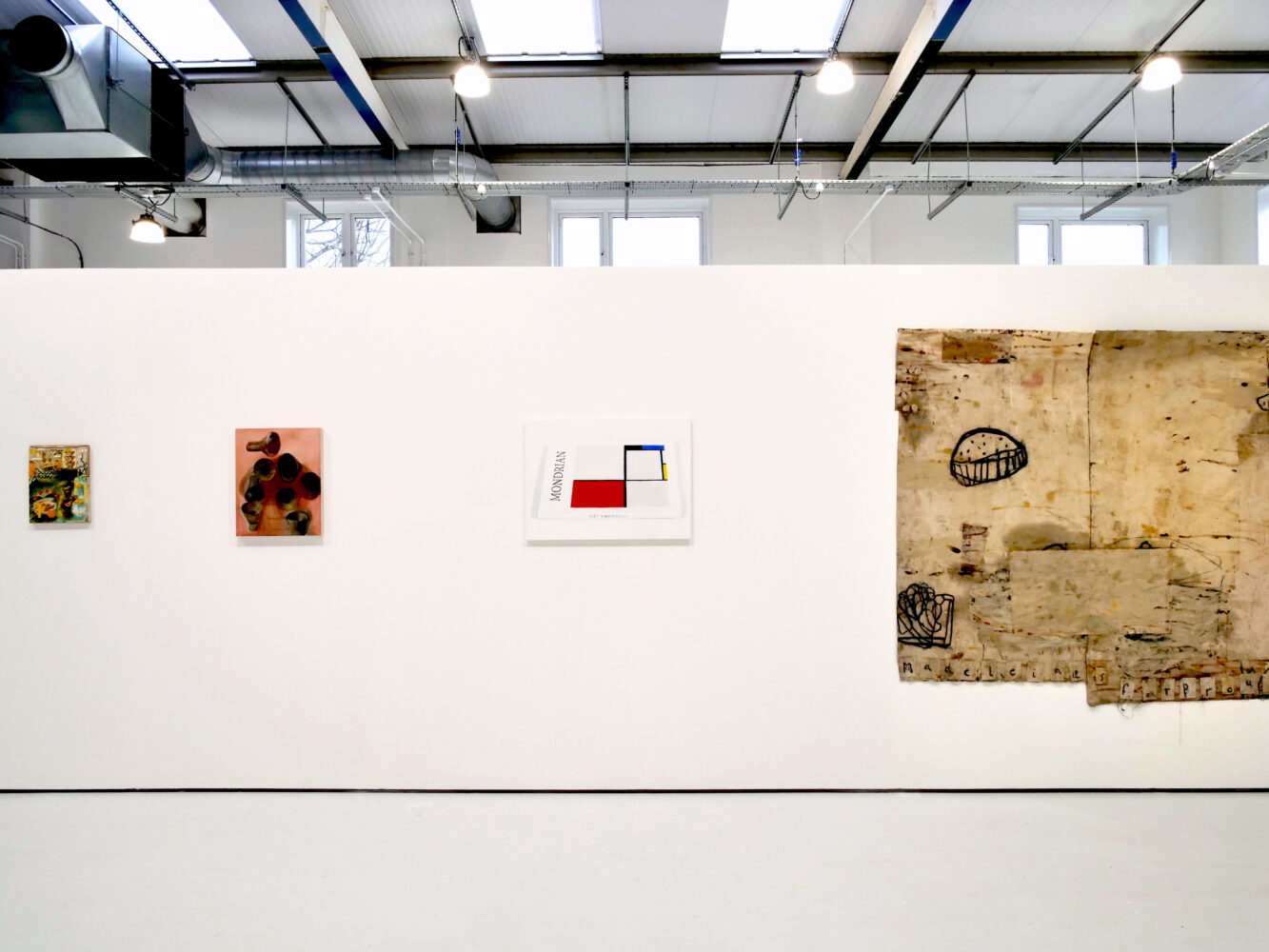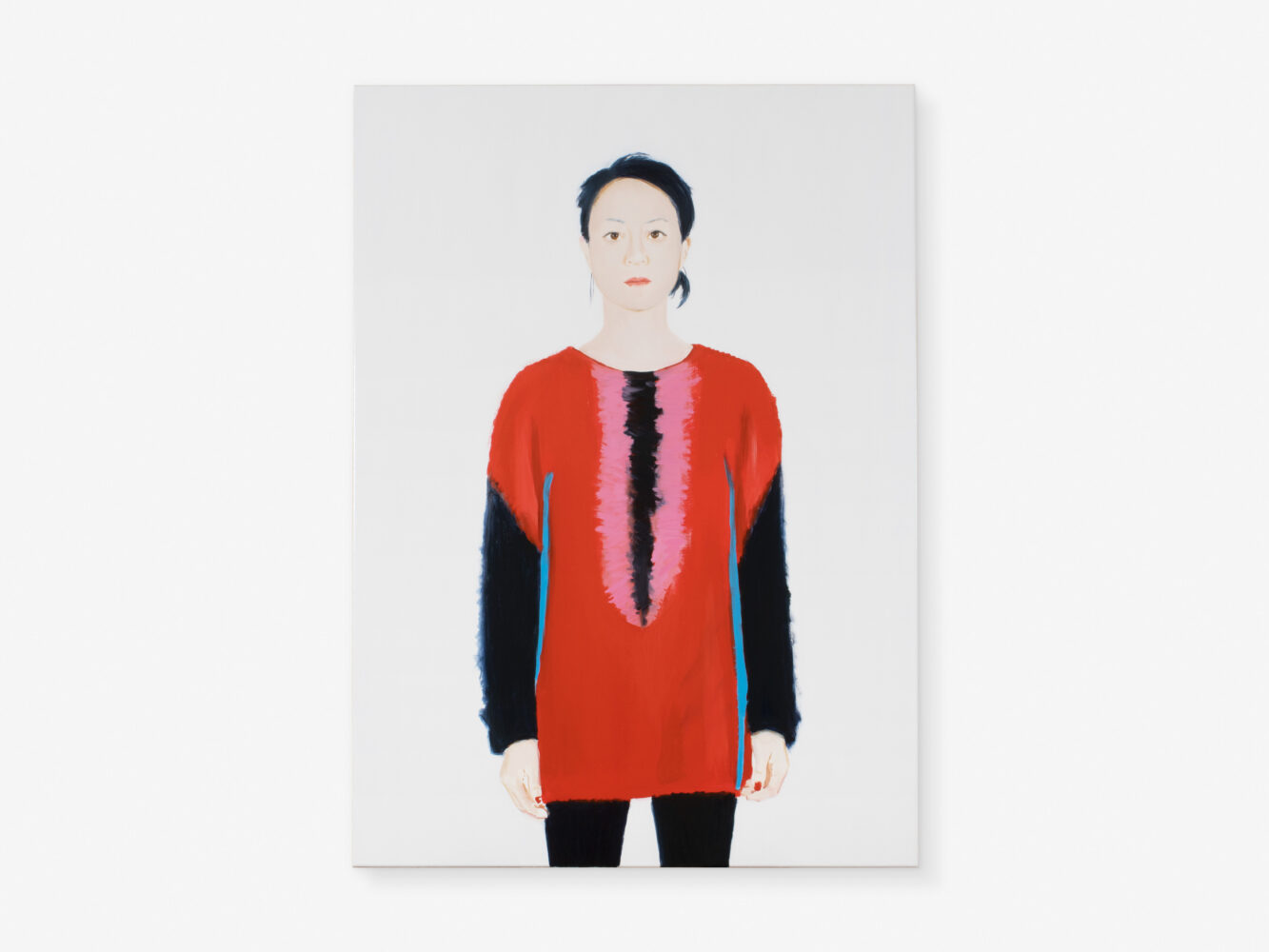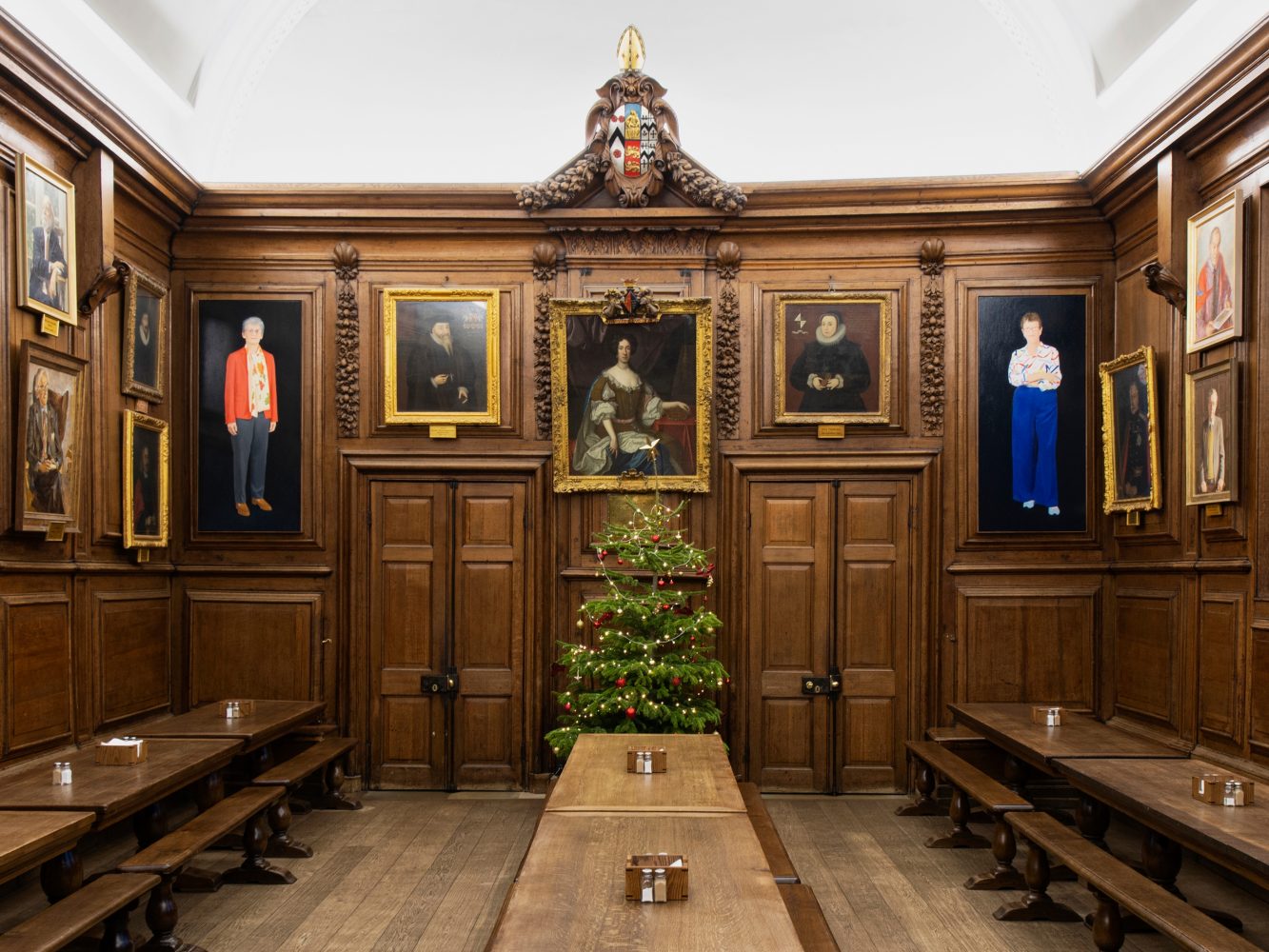Biography
‘What’s the magic of looking at somebody? Why does it feel the way it does?’ Alessandro Raho (b.1971, Nassau, Bahamas) has asked various iterations of these questions for over two decades, producing descriptive realist portraits of his friends and family in order to process and preserve the seemingly inexpressible sensation of being connected to another person. In this, Raho’s practice is self-exploratory, sensitive, caring. (‘I find it interesting to be moved by artifice’, he notes.) But it is a project that is also bound up with the enduring insufficiency of the painted image: Just as Raho’s questions are ultimately unanswerable, so too do his oil-rendered figures stand at an irresolvable distance from those whom they represent.
Raho’s portraits adhere to a strict formal logic: single figures are depicted against a stark white background. Their clothing is patterned, their eyes are fixed on the viewer, their soft shadows tease at the flatness of the canvas. Raho’s son Roman (2018) wears Kenzo sweatpants, a Moschino jumper and a quiet stare, while Ben (2013), also in Moschino, buries his hands in his trouser pockets. Jessica (2011), Raho’s sister-in-law, is upstaged by the jocular presence of Mickey Mouse, who beams out from her black t-shirt. Invariably, Raho refuses to dramatize these figures: just as their poses are understated, so too are their expressions muted to the point of inscrutability. But while their faces of these figures might approximate states of apprehension, determination, vulnerability and love, the figures are invariably comfortable in the presence of the artist. As such, the works are cut with a curious compositional tension. Where there is intimacy there is distance; where there is love, so too separation.
While Raho’s works initially present as static, legible in their conformity to historical conventions of portraiture, they are compositions that slowly destabilize over time. While these subjects may be deftly rendered, their every detail and discolouration replicated ‘faithfully’ (while Raho sidesteps the charge of ‘photorealism’, he accepts that he creates ‘lens-based images’), the insistent whiteness of the backdrops negates the possibility of (geographical, temporal, situational) contextualisation. As a result, Raho’s sitters are destabilised, dissolved into the very act of painting itself. As Michael Bracewell writes in ‘The Art of Alessandro Raho’ (2011), ‘Alessandro Raho’s subjects take their place as simultaneously intimate – their presence deeply felt – and as though withdrawn and withdrawing into a space and consciousness conveyed with visceral acuity by the processes of painting itself.’
Bracewell continues: ‘Raho’s engagement with figuration […] is as concerned with emotional and psychological depth as it is with pictorial depth; indeed, the two become synonymous.’ Raho’s are as much paintings of loved ones as they are paintings about painting’s existential (in)ability to preserve that which is native to reality – that which makes reality what it is. But what the portraits ‘lack’ in verisimilitude they make up for in their ability to heighten, renew or reinvest in the lyrical existence of others. As in Jessica (2012), who conveys a tender combination of self-assurance and self-consciousness, Raho’s paintings free their subjects from the conventional logics of time and space and, in doing so, are able to celebrate and enshrine the true value of their subjects. The figures exist in a vacuum, of sorts, their idiosyncrasies preserved and protected in the face of all that exists beyond them.
‘There is a truth to how people actually look’, notes Raho. This is not a question of aesthetics but of emotional and psychological depth. In his attempt to enhance certain personality traits of his subjects (or his attachment to them), it could be said that Raho does not make portraits but paintings of people – for people comprise more than a surface-level portrait can ever capture. When Raho was approached in 2004 to paint Dame Judi Dench by the National Portrait Gallery, London, one of a number of high-profile commissions that he has undertaken in recent years, he talked of the actor’s inner ‘magnetism’. It was a quality that was not apparent in his source photograph: ‘I painted what was seen in the photograph at first, and it wasn’t like her. At that point, I was made aware of the limits of photography.’ While meticulously descriptive in their execution, Raho’s portraits aim to enshrine something that is more than visual; to capture the feeling of seeing someone whose presence is, for whatever reason, felt.
In recent years, Raho has supplemented his portraits with delicate still lifes, in which inanimate curiosities are treated with the same care and consideration as those who might handle them, and paintings of the British coastline at dusk that are lifted from national advertising campaigns. Initially, the latter works seem at odds to the depictions of family members and friends: their colours are dark and thick; their streets are empty of life. As Bracewell writes: ‘the coastal paintings […] have a sense of exile and alienation, melancholy and cold reverie.’ But in spite of their visual distinctions, a central ambition remains constant. Just as Raho paints portraits as a means to comprehend an emotional pull towards people, so too does he reproduce landscapes in order to interrogate why, in spite of their artifice, they can rouse within him a certain feeling of detachment and listlessness. How, exactly, they evoke his childhood in the Bahamas when they are so temporally and geographically removed from that period. ‘I put a lot into my paintings’, says Raho, ‘just trying to understand – trying to come to terms with the effect that a cheap photo can have on us. It’s very strange, what it does to us. In a way, I’m trying to cope with that.’






























